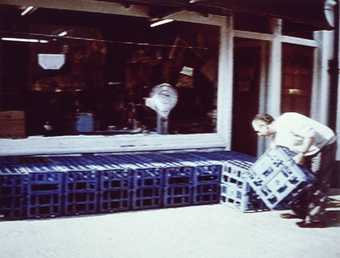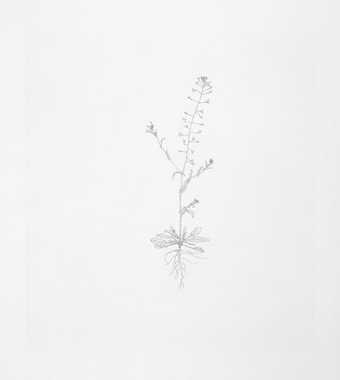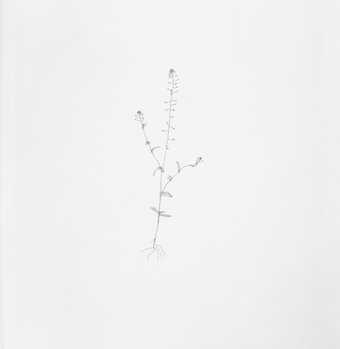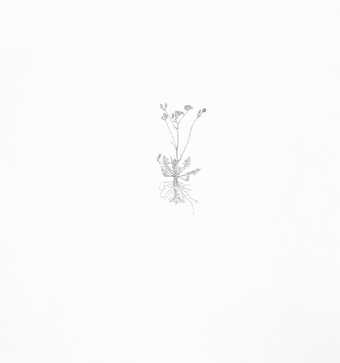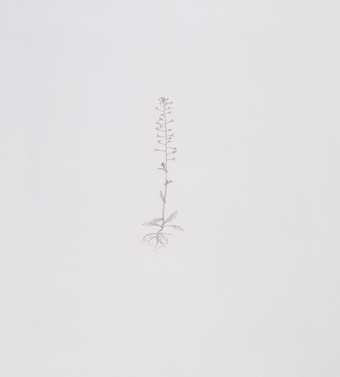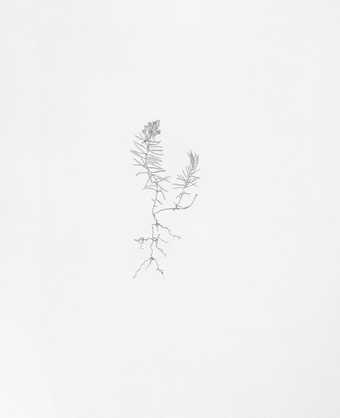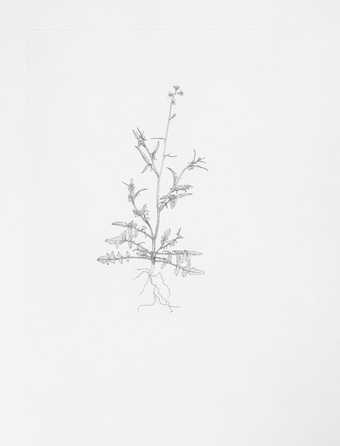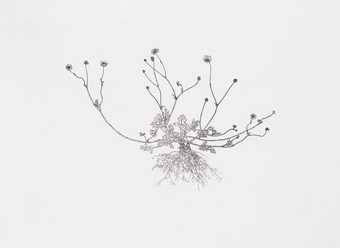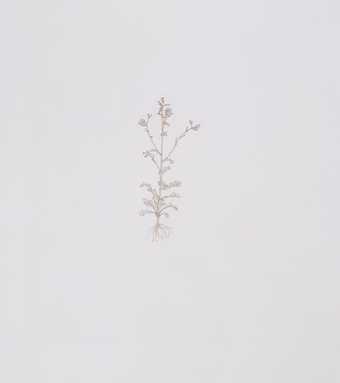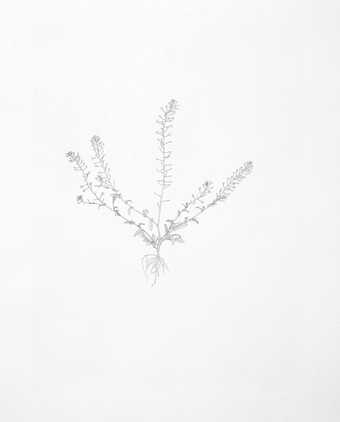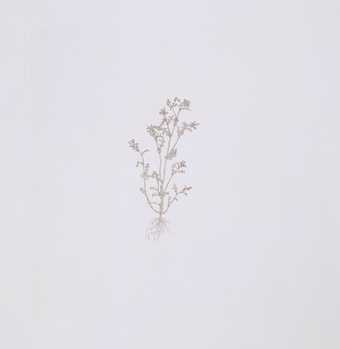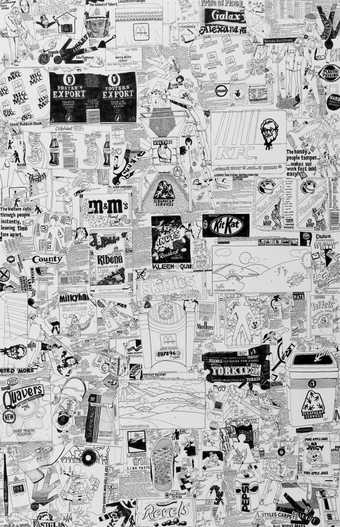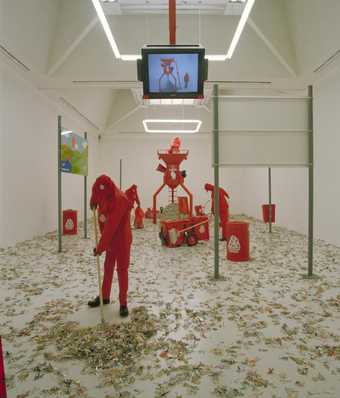
In Tate Britain
Prints and Drawings Room
View by appointment- Artist
- Michael Landy CBE RA born 1963
- Part of
- London
- Medium
- Screenprint, pen and plastic on paper
- Dimensions
- Image: 685 × 858 mm
- Collection
- Tate
- Acquisition
- Acquired by purchase and gift from Charles Booth-Clibborn in memory of Joshua Compston 1997
- Reference
- P77927
Summary
London is a portfolio of eleven prints made by eleven artists based in London. It was commissioned by Charles Booth-Clibborn and published under his imprint, The Paragon Press, London. The images were printed and editioned at Coriander Studio, London. The portfolio was produced in an edition of sixty-five, the first forty of which are portfolio sets and the remainder are the artists' copies. A further fifteen sets were produced for artists and collaborators. Tate's copy is number five in the edition. The title and colophon pages were designed by Phil Baines using his own typeface. The portfolio is contained in a black buckram-covered wooden case bearing the title in yellow. London is the second group portfolio published by The Paragon Press since its inception in 1986. It was conceived as a portable group exhibition containing work by emerging artists of the same generation. There is no particular common theme. Factors linking some of them are studying art at Goldsmiths College, London in the late 80s (where they were taught by Conceptual artist Michael Craig-Martin, born 1941), working with Jay Jopling (who later opened White Cube Gallery in London) and being exhibited at the Saatchi and Karsten Schubert Galleries in London. Booth-Clibborn had already collected work by a number of the participating artists, few of whom had done any printmaking before embarking on the project. Most chose to work with screenprinting, with the exception of Langlands and Bell, whose image is embossed. Screenprinting is ideally suited to reproducing appropriated and photographic images. Its adoption reflects a characteristic use by young British artists (the group to which most of the London artists belong) of objects or images appropriated from everyday life. Individual prints vary in size, the type of paper used and the orientation of the image.
Landy's image, Cor! What a Bargain!, is a one-colour screenprint on 350gsm card in landscape orientation, laminated in plastic. It consists of the title words drawn in black capitals on a fluorescent orange background, next to a cartoon drawing of a bird's head. The words and drawing were added, by hand, onto the screenprinted background, which comprises the print element. Landy made different versions using four Day Glo colours - orange, green, pink and yellow. Because he wanted the print to have a hand-made street-market quality, he then worked on the background using a thick black marker pen. The result is that every print is unique although they all represent the same thing. This is Landy's first print, 'though he does not see it as a print in the traditional sense of the term' (quoted from Contemporary British Art in Print, p.48). The work relates to a series of slogans the artist was producing at the same time for his installation at Karsten Schubert Gallery, London, titled Closing Down Sale (spring 1992). The exhibition consisted of shopping baskets and trolleys filled with defunct items Landy had picked up from the streets, accompanied by a taped commentary encouraging viewers to buy and signs announcing a closing down sale. The work was viewed as a comment on the commodification of art in the 1980s and the economic recession in London in the early 1990s.
Further reading:
Contemporary British Art in Print: The Publications of Charles Booth-Clibborn and his Imprint The Paragon Press 1986-95, exhibition catalogue, Scottish National Gallery of Modern Art, Edinburgh 1995, pp.19 and 46-51, reproduced (colour) p.49
Market: Michael Landy, exhibition catalogue, Building One, London 1990
Jeremy Cooper, no FuN without U: the art of Factual Nonsense, London 2000, pp.39-41, reproduced (colour) p.40
Elizabeth Manchester
June 2002
Does this text contain inaccurate information or language that you feel we should improve or change? We would like to hear from you.
Explore
- history(5,776)
- lifestyle and culture(10,247)
-
- advertising(536)
- commerce(93)
- consumerism(102)
- inscriptions(6,664)
-
- phrase(100)
You might like
-
Michael Landy CBE RA Appropriation 1
1990 -
Michael Landy CBE RA Appropriation 2
1990 -
Michael Landy CBE RA Shepherd’s Purse 5
2002 -
Michael Landy CBE RA Shepherd’s Purse
2002 -
Michael Landy CBE RA Herb Robert
2002 -
Michael Landy CBE RA Smooth Hawks Beard
2002 -
Michael Landy CBE RA Shepherd’s Purse 4
2002 -
Michael Landy CBE RA Common Toad Flax
2002 -
Michael Landy CBE RA Annual Wall Rocket
2002 -
Michael Landy CBE RA Creeping Buttercup
2002 -
Michael Landy CBE RA Common Groundsel
2002 -
Michael Landy CBE RA Shepherd’s Purse 2
2002 -
Michael Landy CBE RA Common Groundsel 2
2002 -
Michael Landy CBE RA Sweep to Victory
1996 -
Michael Landy CBE RA Scrapheap Services
1995

